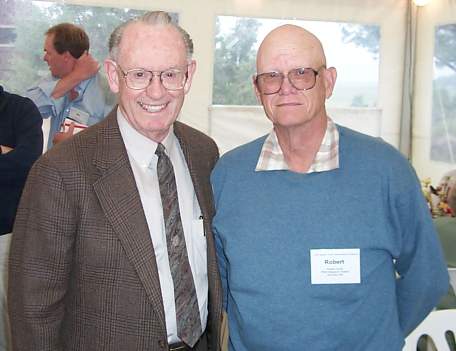The Provenance of Bulletin 201by Robert
O. Curtis
|
|
|
All coastal Douglas-fir foresters – particularly the older ones – are familiar with The Yield of Douglas-fir in the Pacific Northwest (McArdle, Meyer and Bruce 1961), often referred to simply as “Bulletin 201" or “B201". But most are probably not acquainted with its history.
In 1908 a Section of Silvics under Thornton Munger was established in the newly organized District Forester’s office in Portland. One of its first major undertakings was a study of Douglas-fir growth and yield, involving field measurements in existing second-growth stands. Its first major publication was The growth and management of Douglas-fir in the Pacific Northwest (Munger 1911). This summarized existing knowledge of the species and made management recommendations, and included what is probably the first yield table ever constructed in the Pacific Northwest, based on field measurement of 361 sample plots.
E.J. Hanzlik continued this work and developed expanded yield tables, which recognized three site classes and included interpretations in terms of rotations, stand density, and other characteristics (Hanzlik 1914).
The Pacific Northwest Forest Experiment Station was established in 1924 with Munger as Director, and absorbed the previous work and staff at Wind River Experiment Station (which now became the Wind River Experimental Forest). Initial staff included Richard E. McArdle, who was joined by Walter H. Meyer in 1926. Together they continued and greatly expanded the work on Douglas-fir yields, which came to include measurements on 2052 sample plots in 261 individual forest tracts in western Washington and northwestern and west-central Oregon. The general approach followed that recommended by a national SAF committee on yield tables (Munns 1924). This culminated in publication of Bulletin 201 in 1930, which included a vast amount of quantitative information: site index curves; volume tables; volume yields by site class; diameter distributions by site class; increment curves. It was a mind-boggling achievement for a time when computational aids were limited to the slide rule and the mechanical adding machine.
Revised versions were issued in 1949 and 1961. The principal change was the 1949 addition of supplemental tables and discussion by Donald Bruce, which related stand characteristics to stand average diameter. For some purposes this introduced considerable simplification.
B201 clearly showed the enormous productivity of Douglas-fir forests and had a great influence on owners’ decisions to convert from liquidation to planned long-term management. It provided a quantitative basis for management planning, and was the bible of Douglas-fir foresters for half a century. B201 is arguably the most influential single publication in the history of Pacific Northwest forestry research.
Like all normal yield tables, it had definite limitations. The assumptions involved in constructing normal yield tables from temporary plot measurements introduced some biases. Thus, those in the site index curves carried over into other tables (Curtis 1992). In any case, B201 represented development of well-stocked untreated natural stands, and its usefulness faded as foresters moved from one-cut-per-rotation management of natural stands to more intensive management involving density control, plantations and intermediate thinnings. It provided a starting point for some early attempts at yield estimates for managed stands, but satisfactory alternatives had to await the computer revolution and the development of computerized simulation models that began in the 1970’s.
The authors all had distinguished careers elsewhere. McArdle eventually became Chief of the Forest Service. Meyer went on to produce similar yield tables for evenaged ponderosa pine and for Sitka spruce/western hemlock, and then left the Forest Service to become for many years a noted professor at Yale and author (with Chapman) of standard textbooks on forest mensuration and forest valuation familiar to the older foresters among us. Donald Bruce was one of the pioneers of northwestern forest management and a founding partner of the well-known firm of Mason, Bruce, and Girard, and authored (with F.X. Schumacher) another widely used mensuration text.
References cited:
Curtis, R.O. 1992. A new look at an old question–Douglas-fir
culmination age. Western J. Applied Forestry 7(4): 97-99.
Hanzlik, E.J. 1914. A study of the growth and yield of Douglas fir on
various soil qualities in western Washington and Oregon. Forestry
Quarterly 12:440-451. (Review by “R.C.B.”, with excerpts)
McArdle, R.E. and W.H. Meyer. 1930. The yield of Douglas-fir in the
Pacific Northwest. Washington, DC. USDA Forest Service Tech. Bul. No. 201.
64 p.
McArdle, R.E., Meyer, W.H., and D. Bruce. 1949, 1961. The yield of Douglas
fir in the Pacific Northwest. Washington, DC. USDA Forest Service Tech.
Bul. No. 201. 72 p. (rev.)
Munns, E.N. (chairman). 1926. Methods of preparing volume and yield
tables: report of the committee on standardization of volume and yield
tables. Journal of Forestry 24(6):653-666.
Munger, T.T. 1911. The growth and management of Douglas fir in the Pacific
Northwest. Washington, DC. USDA Forest Service Circ. 175. 27 p.
